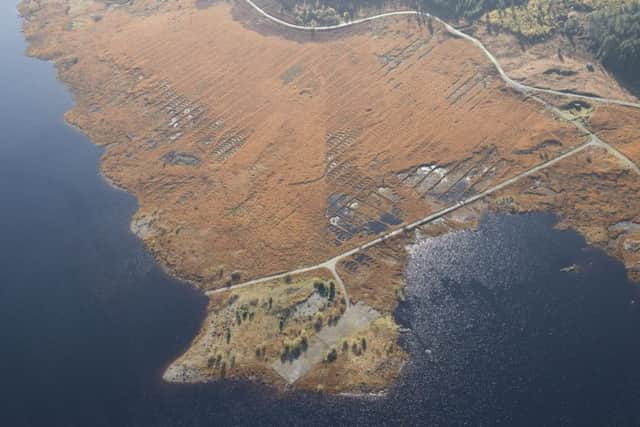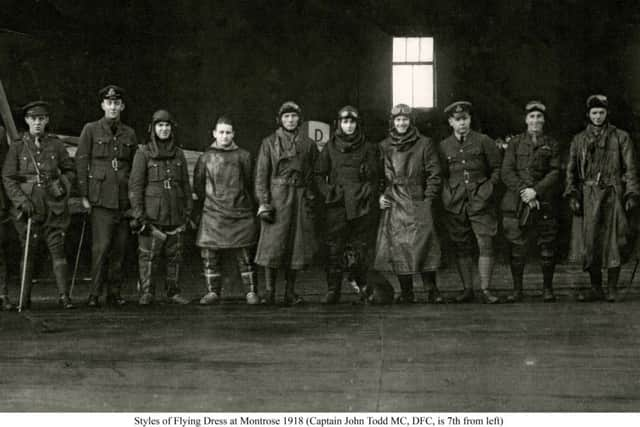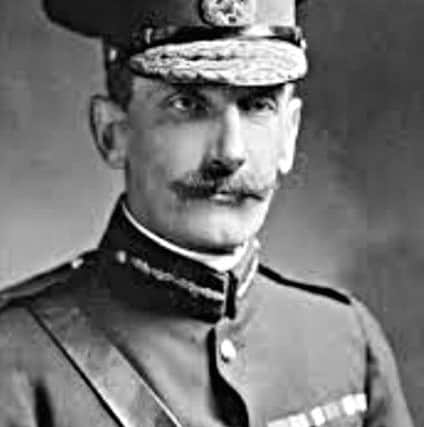The '£3m scandal' of the lost World War One airfield
Around 3,000 men, including at least 600 German Prisoners of War, were deployed to build the new World War One training school in September 1916 with homes and large parcels of land requisitioned from local people for the job.
Soon, new roads and a stretch of railway were in place to bring in supplies. Accommodation to house 500 men across 18 barrack blocks was also built along with a sewage works and a 400-seat cinema, complete with tip up seats.
Advertisement
Hide Ad

Inspired by an aerial training school at a lake near Bordeaux, a search began for a similar site in Great Britain with Loch Doon chosen in early 1916 given its remote location and the surrounding steep slopes of Craigencolon and Cullendoch hills.
While infrastructure was developed at a rapid pace, deep issues with the suitability of the terrain persisted.
Crucially, there was no avoiding the fact that a site earmarked for the airfield to the east of the loch was bog land.


James Shaw, country clerk of Ayrshire at the time, later recalled a meeting of uniformed officers at the Station Hotel in Ayr in 1916.
An account said: “It was clearly explained by engineers and others with knowledge of the ground, that it would be impossible to land planes near the loch, because of deep moss. The officials were disappointed and said that it could be drained.”
Lt. General Sir David Henderson, the Glasgow-born director-general of military aeronautics at RFC, was warned against the “questionable conditions” by at least two senior officials, according to accounts.
Advertisement
Hide AdHowever, Sir David, who was later hailed as the “Father of the RAF”, took the advice of the chief engineer to Scottish Command who considered it possible to drain the landing area within three months.


McAlpine, the Scottish construction and civil engineering company, was contracted to build the air school complex. In time, a new alternative airfield was chosen at Bogton on the outskirts of Dalmellington. While less problematic that the lochside land, vast amounts of work were still required to turn it into an airfield. It never went into operation with the school later demolished and the remnants partially submerged by rising water levels.
Advertisement
Hide AdIt was a request by McAlpine for more funds to blast a 1,150ft railway tunnel into the ground that raised alarm bells over the cost of the scheme with a select committee ordered to investigate the project.
The Department of Military Aeronautics was criticised for continuing with the scheme beyond the summer of 1917 when it became apparent that the limited 25mph to 60 mph speed range of the railed targets “could in no way truly represent the prevailing conditions of aerial warfare.”
The select committee report said: “At that time, the whole situation ought to have been reviewed and the authorities should then have acknowledge the mistake that had been made and stopped the work.


“Loch Doon and the countryside around it will soon return to the solitude and silence from which it was aroused by the introduction of thousands of men over a period of 15 months, at a cost of hundreds of thousands of pounds of public money on an enterprise which was misconceived from the beginning, and which, even if one begun ought never to have been continued. Its name will be remembered as the scene of one of the most striking instances of wasted expenditure that our records can show.”
The issue was raised in the House of Lords in March 1918 when it heard that £3m had passed through the post office in Dalmellington to finance the scheme - around £198m in today’s money.
It was put to the house that the figure was closer to £425,000 although various figure have been aired since then.
Advertisement
Hide AdLieutenant General Sir Spencer Ewart of Craigcleuch, Langholm, General Officer Commanding Scottish Command from 1914 to 1918, was an ongoing critic of the Loch Doon scheme.
Peter Connon, in his book An Aeronautical History of the Cumbria, Dumfries and Galloway Region, draws from General Ewart’s unpublished autobiography.
Advertisement
Hide AdIt said: “I was personally much opposed to Loch Doon being selected as a site for such a range, because I realised what an enormous sum would have to be expended in the making of roads and approaches to it.


“Moreover, any local idiot could have informed the Army Council that a narrow and confined loch, situated at such a high elevation, was bound to be frozen and therefore useless for hydroplanes in the winter.
“Nobody in Whitehall would listen to my remonstrations and something over million pounds, I believe, was wasted before this senseless project was abandoned.”
He claimed those responsible should have been removed from service and regretted the treatment of some local people as the training school took shape.
